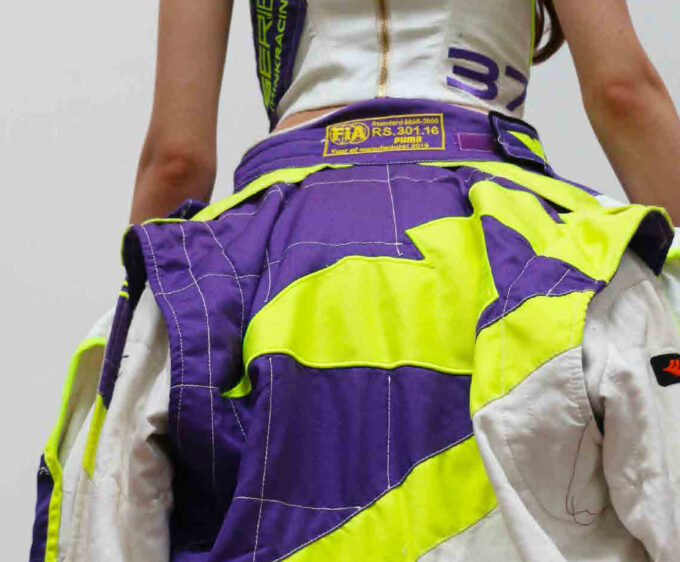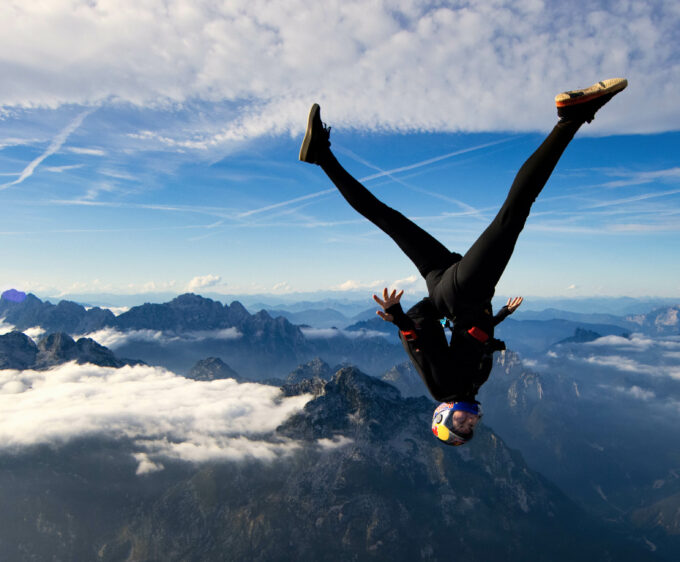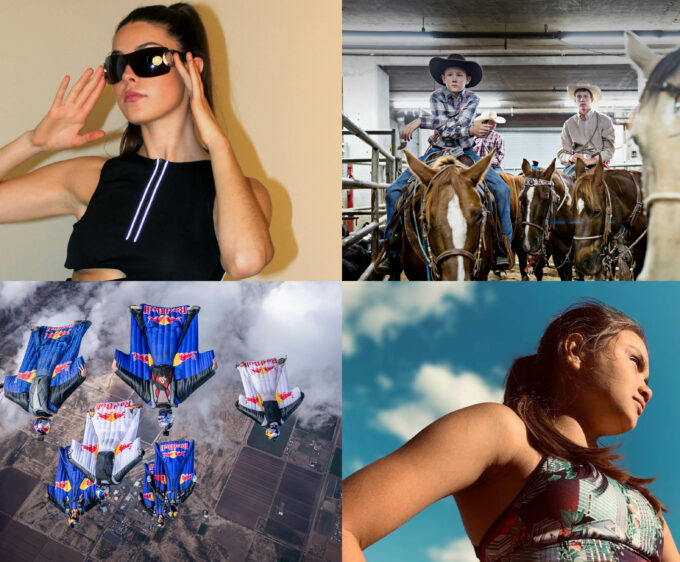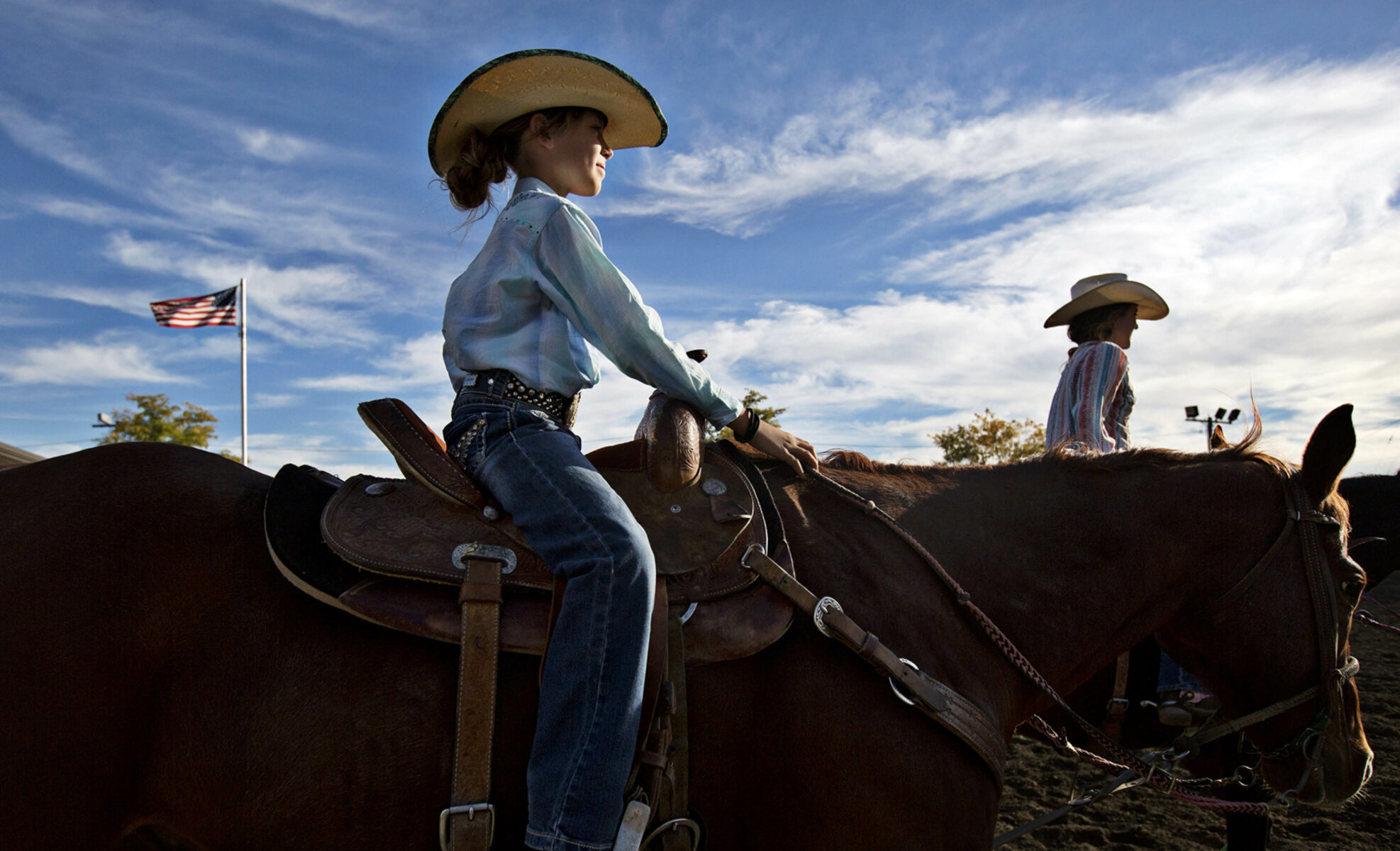
Youth: The Rodeo Kids
Calf roping is a girl thing. Kim Raff’s ‘Rodeo Kids’ project sheds light on young lives challenging gender norms
By Glorious
Photography by Kim Raff
Kim Raff is a photographer driven by authentic storytelling and she has the ability to connect with subjects, document vibrant cultures, and tell compelling stories. We sat down with Kim to talk about her ‘Rodeo Kids’ project, which opened her eyes to the authenticity of cowboy hats and the genuine lives led by these kids and their families. Kim also embraces the evolving landscape of rodeo, where gender norms are being challenged, and inclusivity is thriving.
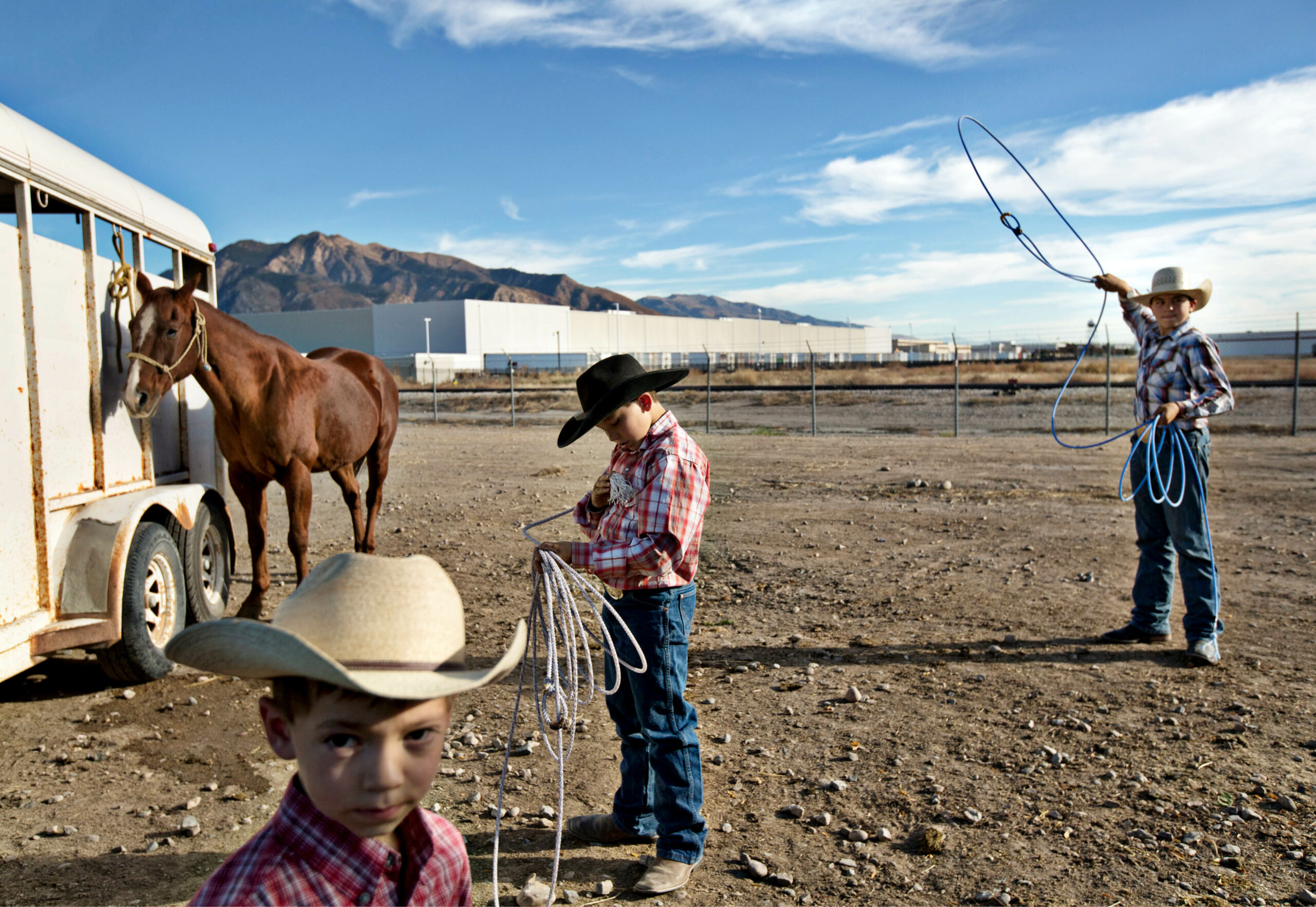
Glorious: So, first of all, tell me about how you got into documentary photojournalism.
Kim Raff: Yeah, I’ve been doing this for over 15 years now. It all started when I was in high school, working with traditional photo paper and a developer, and I fell in love with the process. Then, I went to Rochester Institute of Technology, where I discovered that photojournalism was a thing and I feel lucky to have found it early on. As I learned more about it, I realised I’m more of a journalist than just a photographer. The camera is merely a tool for me, I’m passionate about connecting with people and telling stories. I liked the idea of being on staff somewhere and having a regular pay cheque, especially as a young person. I pursued that path, did some internships, and worked in newspaper photojournalism for about seven to eight years. However, I got laid off when the industry collapsed, along with many others. At that point, I took the risk of freelancing, which was initially very challenging. But now, after seven to eight years, I’m in a great place and it has been an amazing journey.
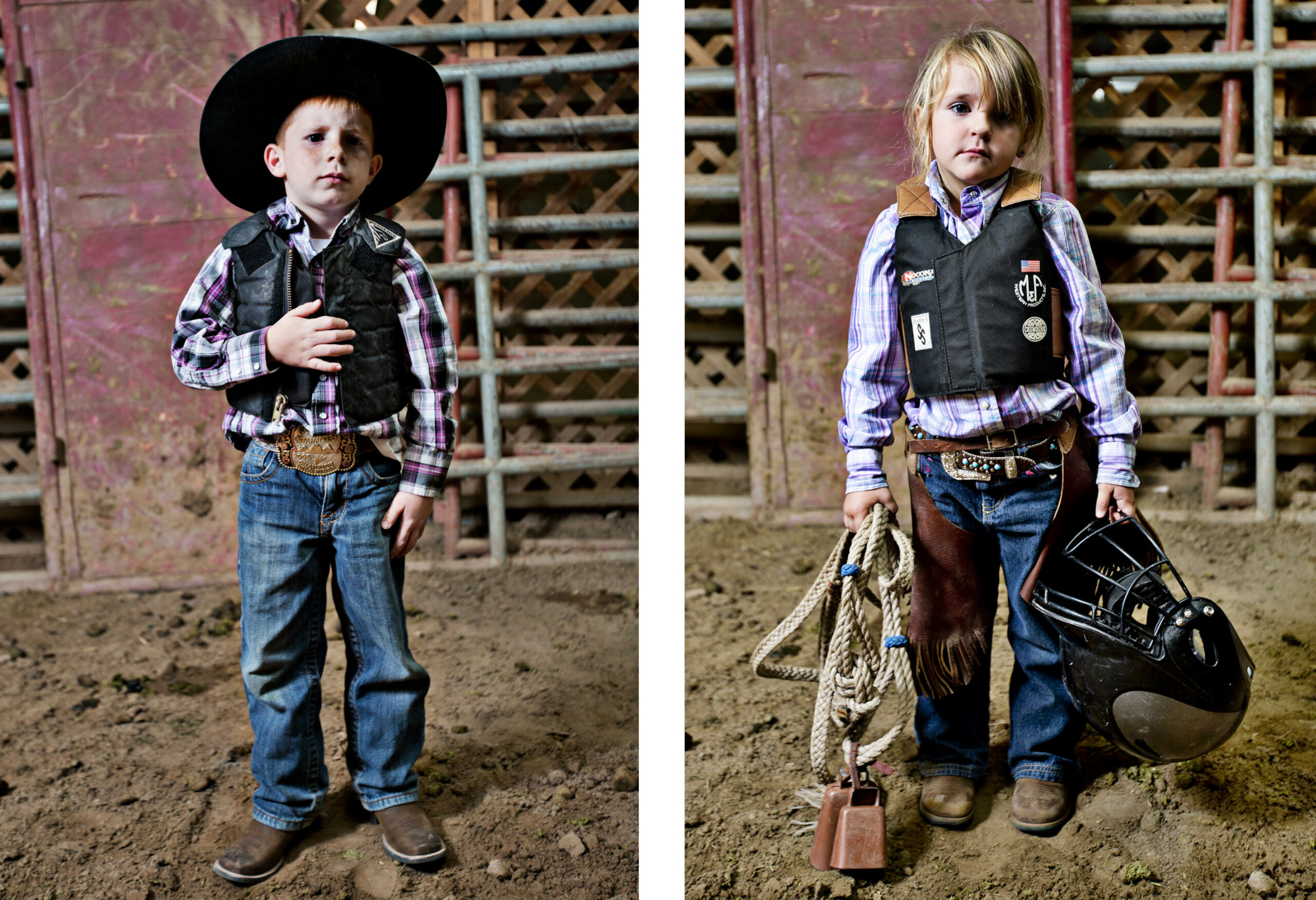
Glorious: So, how did the rodeo kids project come about?
Kim Raff: I actually got hired by the New York Times to shoot that. It was early on in my freelance career, and I was determined to make a name for myself. For this particular assignment, the editor suggested doing a portrait series because he thought the kids would be adorable, which they were. It was my second or third assignment for him, and it was like a dream come true to be hired to photograph something like that, as it aligned perfectly with my interests in unique communities and offbeat cultures. So, I took the opportunity to make an impression. I hired an assistant and set up a proper station, which was unusual for a shoot like this. I used the payment from the assignment to hire the assistant. Interestingly, that work helped me secure other projects. It solidified my relationship with the editor, even though I never told him about hiring the assistant!
Glorious: What did you find most challenging and rewarding about this shoot?
Kim Raff: For me, the challenge wasn’t really about photographing the kids. I had over a decade of newspaper experience, so I was accustomed to working with children. Once you get them to stop staring at you, they become easy to shoot because they tend to ignore you. However, the challenging aspect was the rodeo itself. Typically, rodeos can last for several hours, but this one was only two hours long, so I had limited time to capture everything. I was constantly on the move, probably running about 90% of the time. There was very little downtime because I had to photograph both the portraits and the actual event simultaneously. I didn’t have the luxury of going back day after day; I had to make it work in a single evening. Looking back, I can’t believe I managed to pull it off. It’s one of those instances where success comes from preparation. The challenges I faced turned out to be rewarding considering the outcome of the shoot.

CHALLENGING
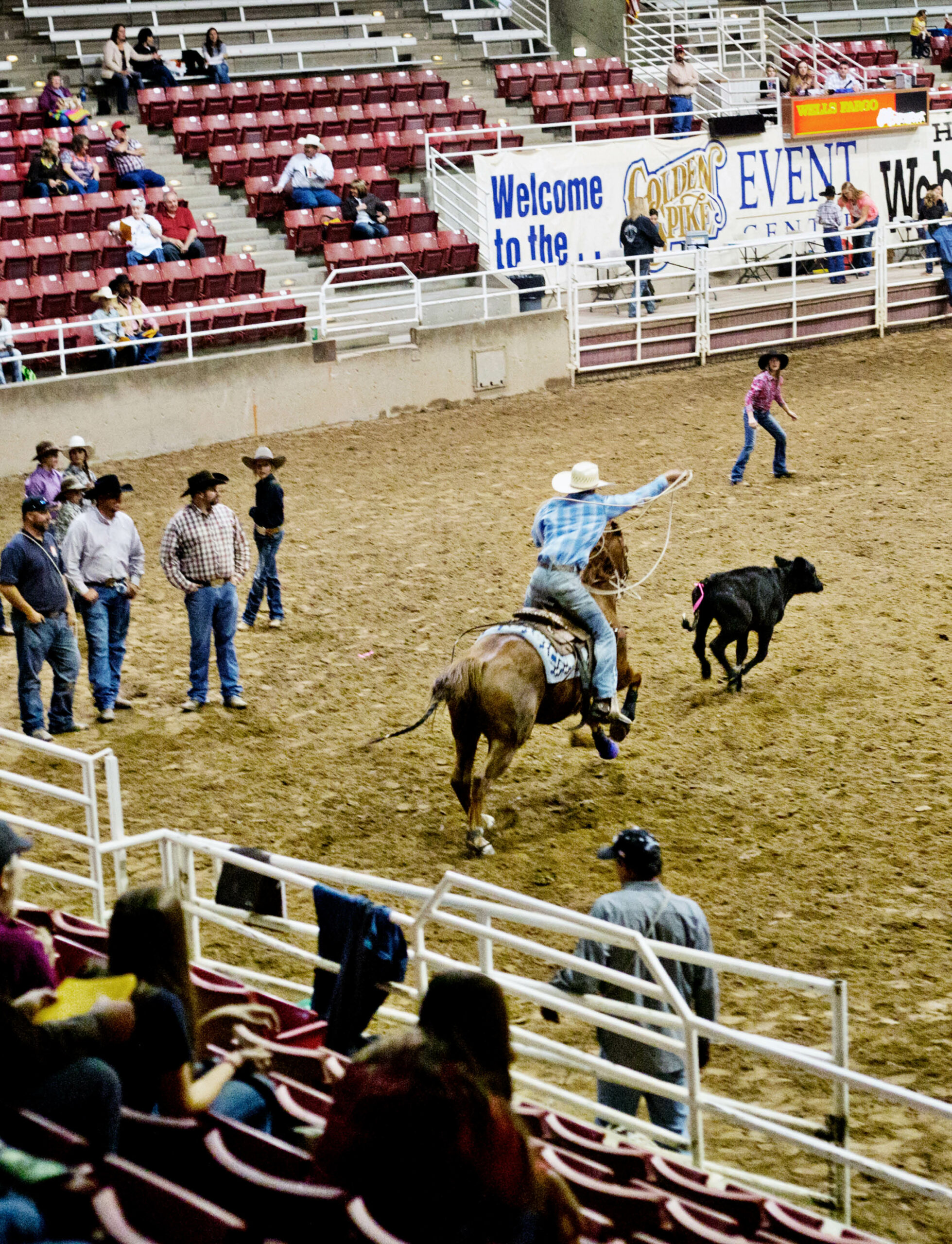
Glorious: Did you have a particular approach that you used to establish a rapport with the kids before photographing them?
Kim Raff: Yeah, it’s not really a different approach with kids or anyone else. I believe in bringing a positive energy to the situation and being authentic because I think people can sense that. Kids especially have a knack for picking up on it, and it helps in establishing a connection. Of course, with kids, I make an effort to engage with them more. There’s a challenge when it comes to kids and portraits. They often have this forced, unnatural smile that they’ve been taught by their parents. It’s like this awful, terrible smile that you want them to stop doing, therefore it can be challenging to capture genuine expressions. With older kids, I try to prepare them by explaining that I want them to be themselves, not pose like they would with their parents. I find that when people understand this, they relax, and it shows in the photographs. Sometimes, I use a technique where I ask them to bring their lips together and relax, instead of the typical forced smile. This helps them let go of that cheesy smile and captures a more compelling and authentic representation, especially considering the ruggedness of the sport they’re involved in.
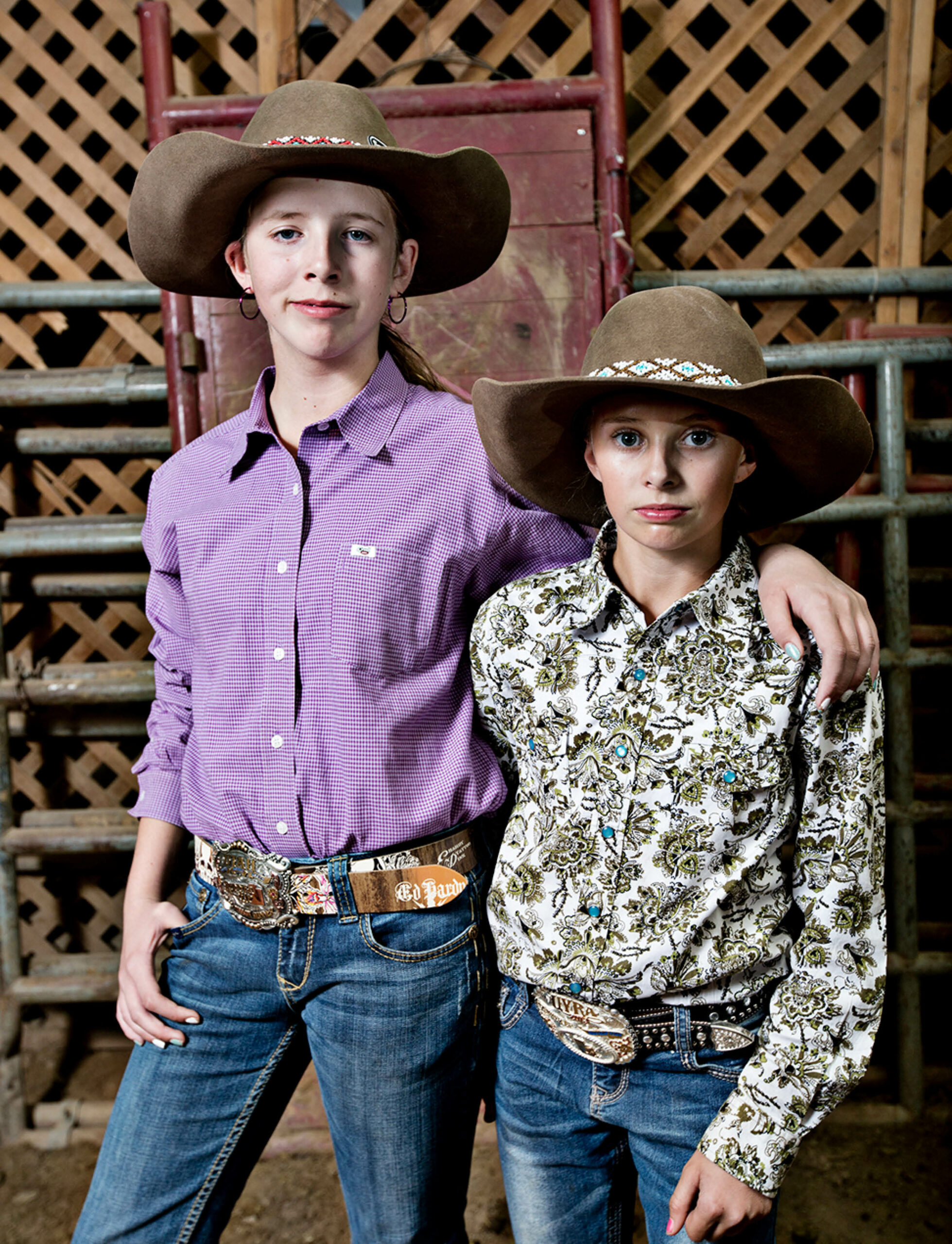
Glorious: How familiar were you with rodeo beforehand?
Kim Raff: I had photographed a few rodeos before. One of my favourite assignments was when I worked in Utah as an intern. I was sent to cover a high school rodeo championship, the finals, it was an incredible experience. These kids had been participating in rodeos all year, and this was their chance to become state champions. The athletes were amazing, and what struck me was the authenticity of the cowboy culture. Coming from the East Coast, I didn’t realise how real and rooted it is out here. These are genuine cowboys who live on ranches. Rodeo is a part of their life and culture, and they use the techniques and skills they showcase in competitions for their work on the farms and ranches. It’s important to understand that rodeo isn’t like bullfighting or something inhumane. These cowboys rely on these skills to run their operations and care for their animals. For example, calf roping is often criticised, but I’ve seen cowboys use the same technique to castrate calves on the field.
It’s practical knowledge they apply in their daily lives. So, when people say it’s inhumane, they miss the connection to ranching and the food system. Real cowboys exist, and they’re not a fringe culture. They’re part of the fabric of this region, and you come across them regularly. That’s why I find it amusing that in bull riding, the animals often end up winning by hurting the riders. It’s not a one-sided contest. Even winning in bull riding means simply staying on the back of a bull or not getting injured.
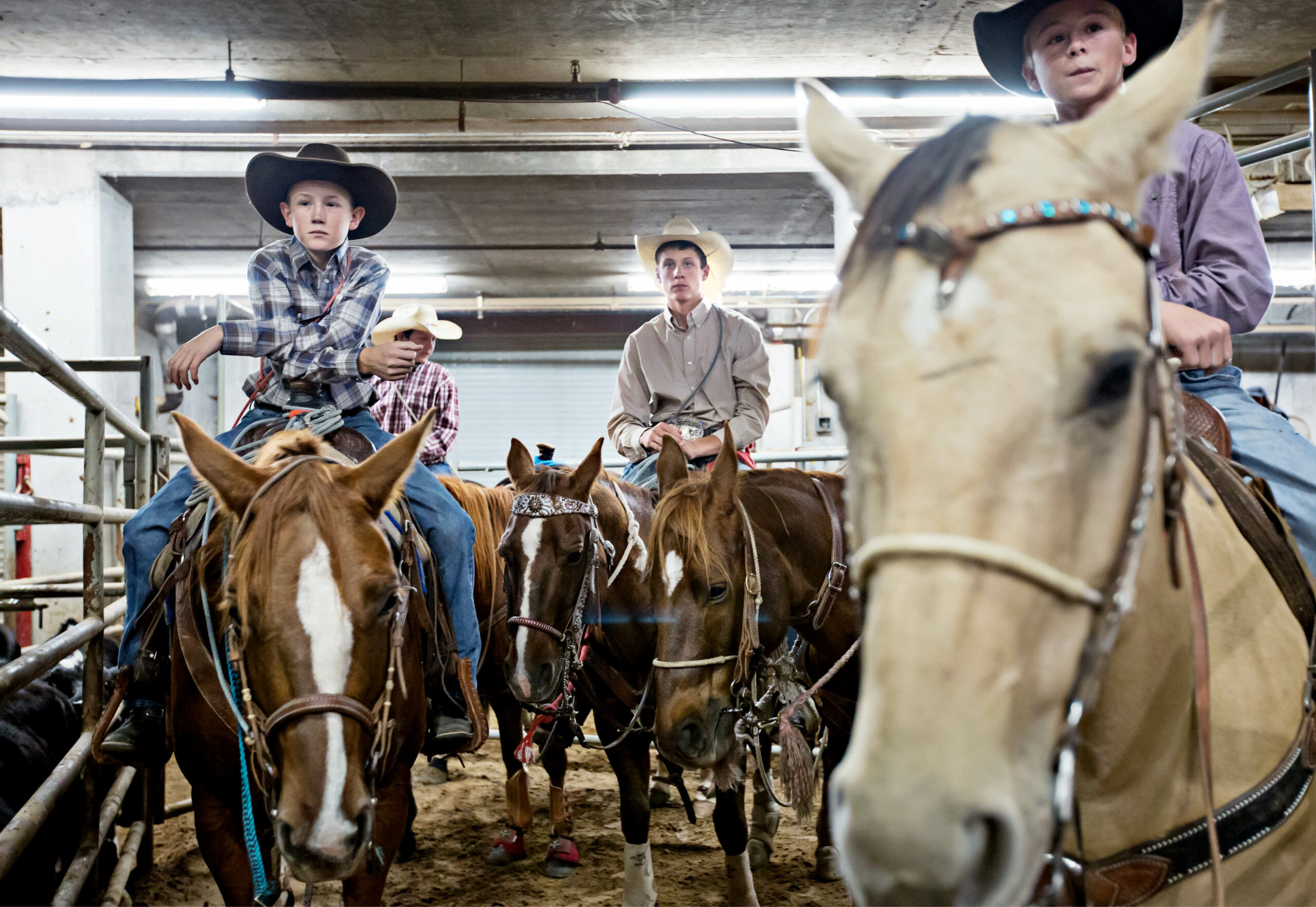
BELONGING
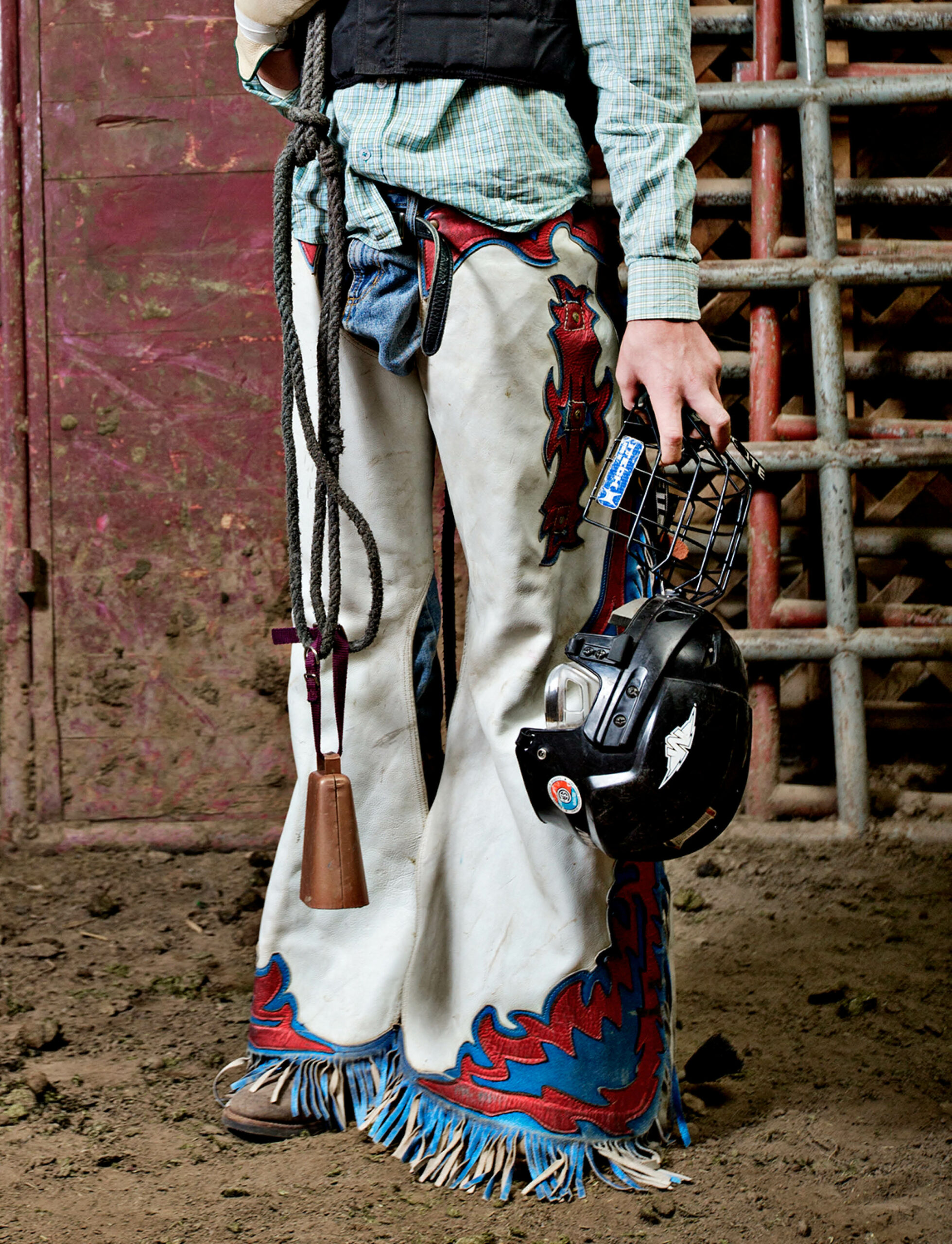
Glorious: Did you notice any common characteristics or qualities among the rodeo kids?
Kim Raff: I can’t really speak of specific characteristics or qualities, but what stood out to me was the strong sense of family involvement. It was definitely a family affair. When I arrived early to capture their preparations, I realised that they were already there, getting ready. Some families had driven long distances, like from Idaho, just to be there. In one of my photos, there are two sisters, highlighting the inclusive nature of rodeo. It’s interesting to see how kids get involved in different events, perhaps influenced by their siblings or family members. While barrel racing has traditionally been associated with women, I’ve noticed a shift where girls are exploring other events as well, such as calf roping. It’s great to see these gender norms being challenged and expanded. The boundaries are starting to break down, and it’s a positive trend in rodeo and sports in general. It’s important to acknowledge that this way of life is gradually fading, so families are likely thrilled to see their daughters interested in activities like mutton busting. The landscape of rodeo is evolving, and it’s both fascinating and sometimes frustrating to navigate the changes.
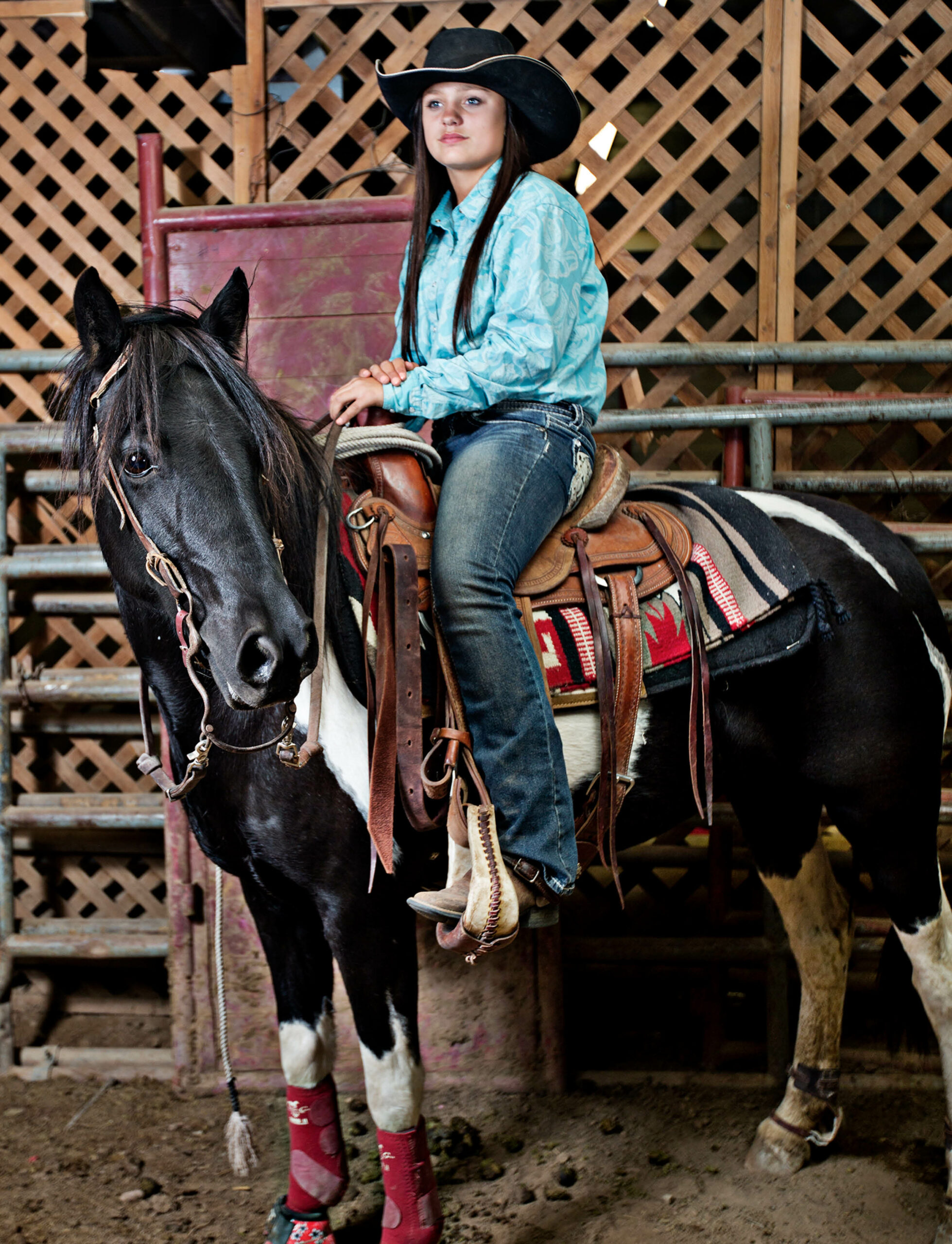
Glorious: It’s wonderful how your ‘Rodeo Kids’ project contributes to the preservation of rodeo culture and tradition, especially through the perspective of young participants.
Kim Raff: Absolutely. It was an incredible experience for me to immerse myself in that culture, even if only for a short time. As I mentioned earlier, coming from the East Coast, I had always had this image in my mind of what rodeo and ranching culture might be like, but seeing it in reality was truly eye-opening. People authentically wearing cowboy hats and living this lifestyle, it’s not just some fictional concept—it’s their actual way of life. I imagine these boys and girls grow up surrounded by it, witnessing their parents’ involvement, and feeling a sense of belonging. These kids embrace the sports as a way to showcase and develop the abilities they already need for their daily lives. It’s like turning their everyday tasks into a sport and it’s fascinating to witness and be a part of. Also, I find it very interesting how we are witnessing a rise in the prominence of black cowboys. It’s becoming a significant movement, and it’s intriguing to see how it’s taking shape, especially in more urban settings. I wonder what factors contribute to its popularity, but I’m thrilled that it’s gaining traction, as it adds another layer of richness to the rodeo culture.
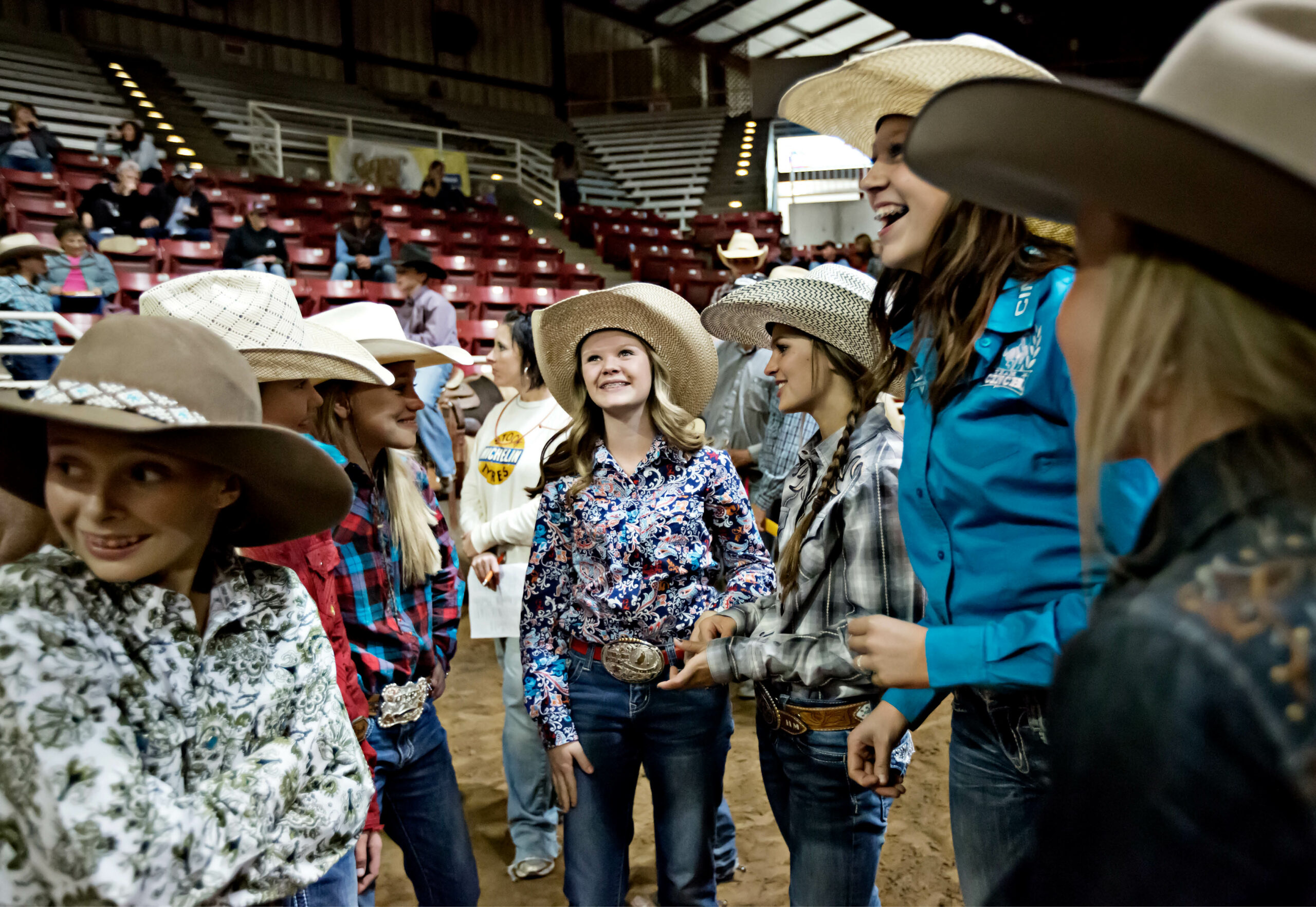

Glorious: What were the standout moments and your favourite images from the shoot?
Kim Raff: There were a few memorable moments and images that stood out to me. One of my all-time favourite shots is of the little girl in her mutton busting outfit. It captures her strength and humble demeanour, with a touch of badassery, which makes it a truly powerful image. The photo of the two sisters also resonates with me because their body language and the emotions conveyed speak volumes about the culture they come from. Another fun moment was capturing a young boy on a sheep, participating in mutton busting. He was being hauled along, and the image has a humorous quality to it. It highlights the sometimes ridiculous situations these kids find themselves in, preparing for events like bull bucking. It’s just hilarious to see them on sheep, a far cry from typical ranch activities, but it’s part of their journey. I also loved photographing the boys outside their trailer, making lassos and hanging out. It embodies the essence of the culture and the atmosphere surrounding the rodeo. It’s a glimpse into their world and the aesthetics that define it and those images truly resonate with me.
Glorious: Are there any other projects involving kids that you would be interested in pursuing?
Kim Raff: Currently, I’m particularly drawn to projects within the queer community. As a queer person myself, I have a strong interest in exploring the experiences of queer individuals, including the issues surrounding trans kids in sports. It’s a topic that holds great significance within the queer community, and I’m eager to contribute and shed light on it through my work. I would love the opportunity to undertake projects that are more closely connected to this world and its unique aspects.
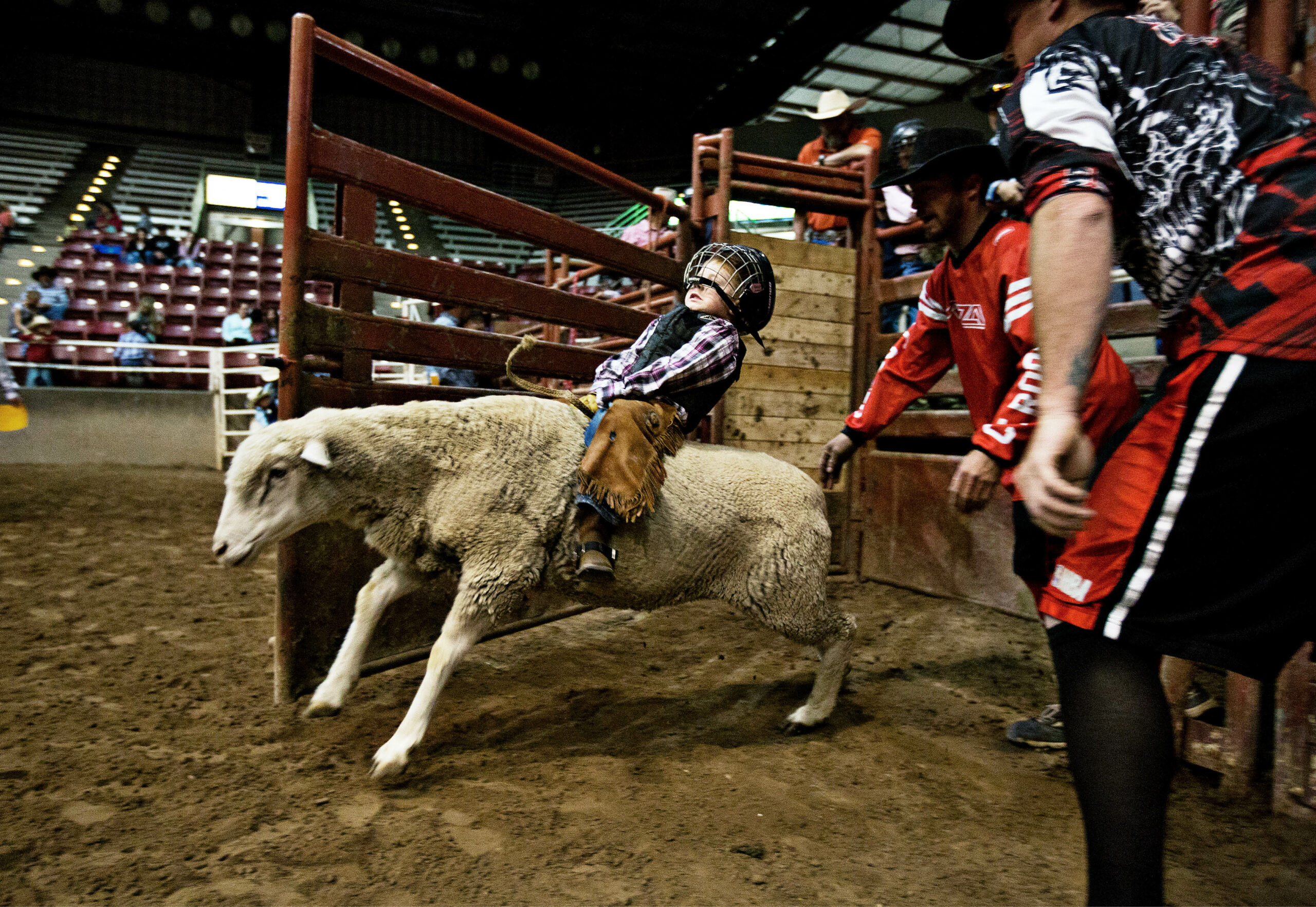
Editorial Design by This is Root
Title image – Madey Rees, 9, rides in the warm-up area before the competition starts
